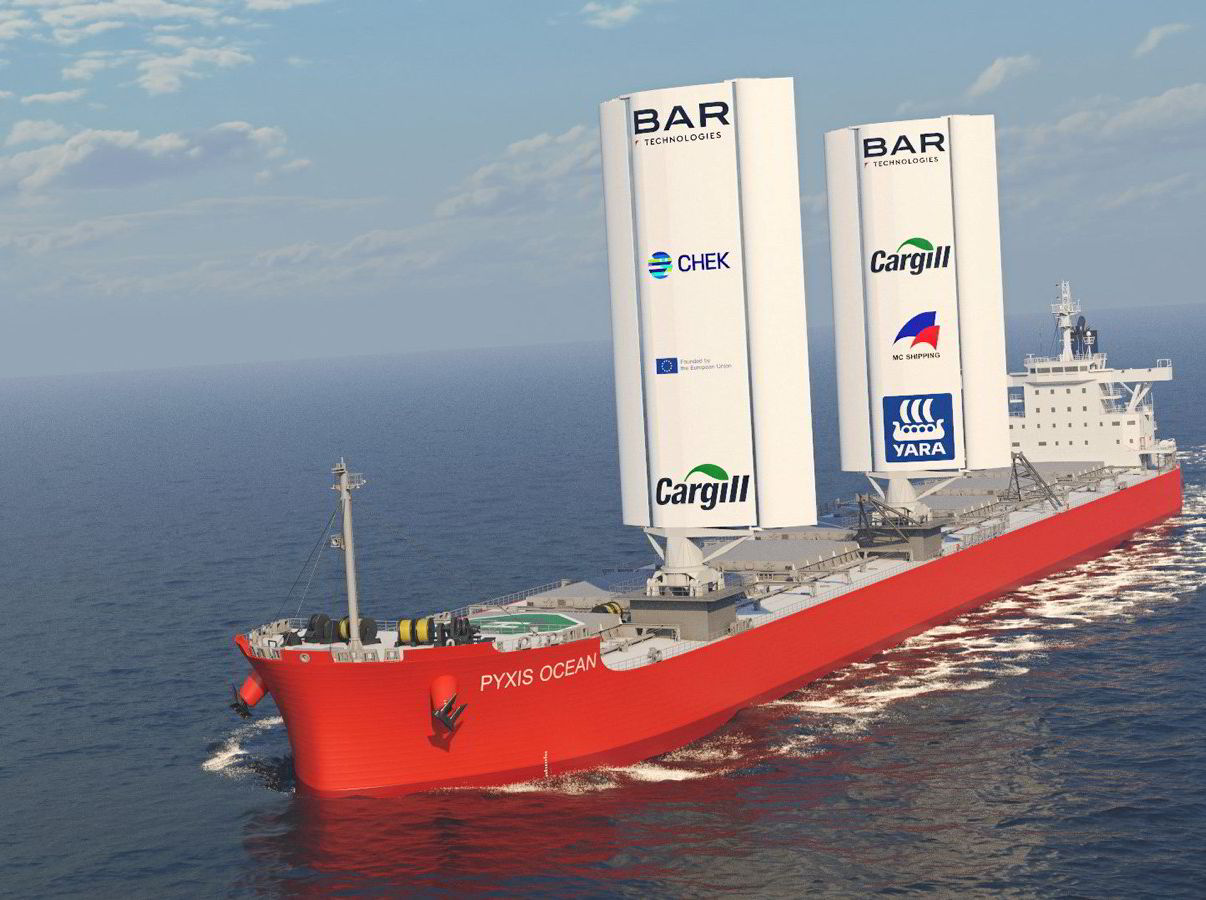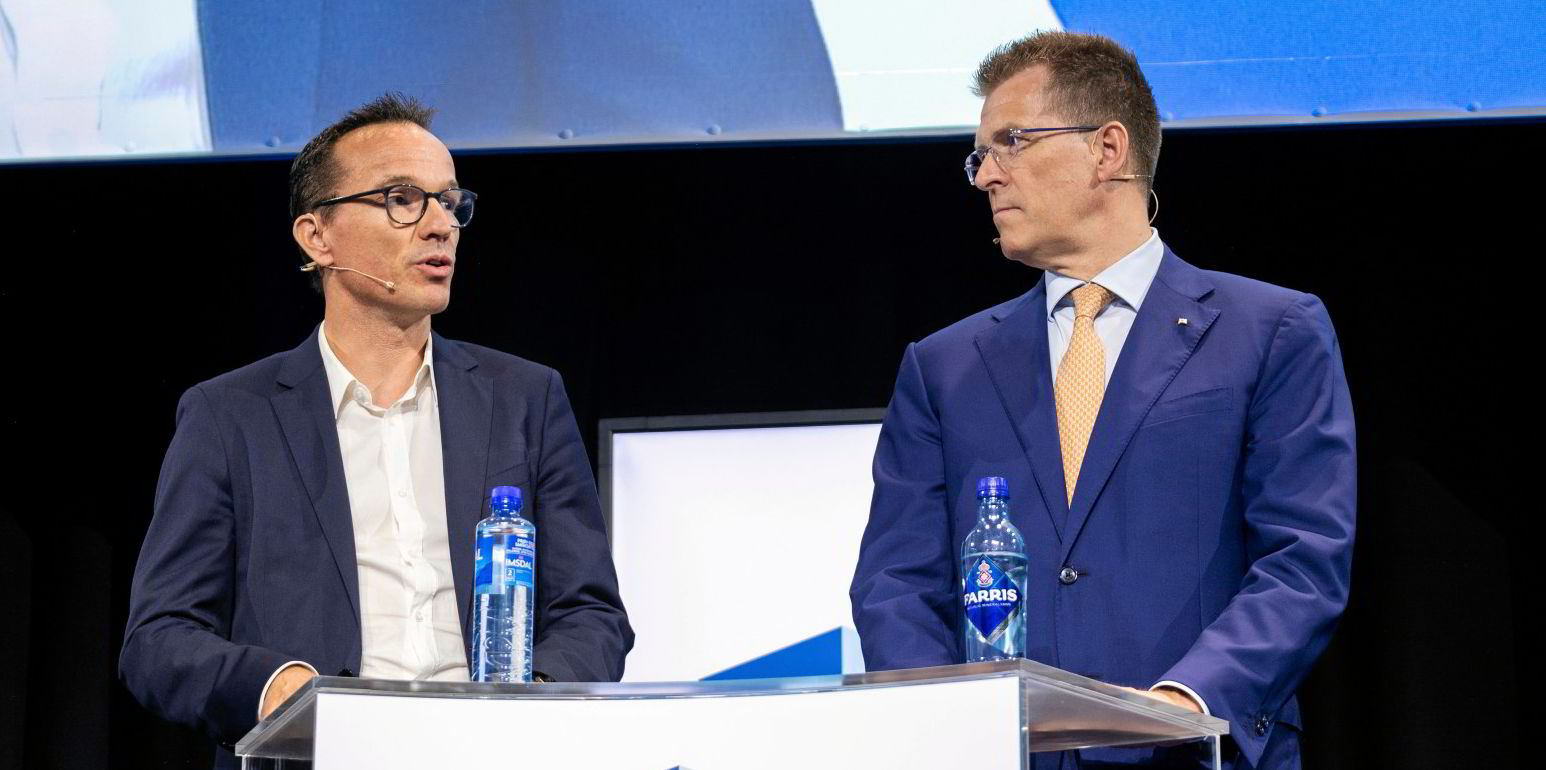Cargill Ocean Transportation president Jan Dieleman said the company could target retrofitting five to 10 ships with wind assistance technology.
But the executive, who leads the shipping division of US commodities giant Cargill, pointed to even greater promise in using the technology in newbuildings that have been optimised for wind power.
His comments came after a Mitsubishi Corp bulker was selected to be the first ship fitted with BAR Technologies’ WindWings sail technology under tests agreed with Cargill.
The 80,962-dwt Pyxis Ocean (built 2017) will be retrofitted with two WindWings that are expected to generate average fuel savings of 30% once they are deployed in early 2023.
Dieleman said Cargill, which operates a chartered fleet of 650 bulkers and tankers, wants to explore not only the economics of deploying the sails, but also the logistics and safety, for about three to six months before deciding on more.
“With all the work we have done, we of course believe that it will work, otherwise we wouldn’t be doing this,” he told TradeWinds.
He said Cargill also wants to explore how wind-assisted vessels will work commercially, including weighing customer demand and how voyages can be optimised.
While he said he does not know how many vessels Cargill will ultimately seek to retrofit with additional sails, he added that five to 10 would be a reasonable target.
But Cargill sees retrofits as just one track, with newbuildings as a potentially more impactful use of the technology, as vessels can be optimised for wind assistance.
TradeWinds’ magazine TW+ has reported that BAR Technologies sees its WindsWings are expected to have a much bigger market in the newbuilding sector because new ships can be designed to overcome the field-of-vision challenges of sails.

Dieleman said the technology can also be combined with new fuels.
“That is more of a ’25-’26 kind of period because the yards are not going to be able to deliver or design something before that date,” he said.
“So what we’re trying to do is at least get some of these retrofits out, but the real game-changer is going to be if you can optimise a ship design for wind.”
The WindWings project also involves Yara Marine Technologies, which will deliver the sails, and has approval from classification society DNV.

Some 18 vessels worldwide have been outfitted with wind technology, according to a recent sustainability outlook by Houston-headquartered classification society ABS.
That includes wind assistance, in which the technology can provide 5% to 20% of a ship’s power needs, and wind propulsion, in which the hull and other systems are also retrofitted to allow the technology to provide 15% to 40% of savings.
But ABS said the technology has the potential to support the industry’s transition from conventional fuels to carbon-free fuels further down the road.
Georgios Plevrakis, ABS vice president of global sustainability, said: “If wind propulsion could actually add to the whole overall efficiency of a vessel, it’s something that deserves to be looked into before you start exploring what type of alternative fuel you will be implementing.
“So we have to completely expend all the options that we have on the efficiency side as we start entering into that low-carbon and zero-carbon fuel narrative.”
ABS said wind propulsion may be an enabler for quicker uptake in alternative fuels because its savings can help reduce costs for use of these higher-price fuels.
Plevrakis told TradeWinds that one of the things holding back shipping from greater adoption of wind propulsion technology has been a lack of guidelines for calculating the emissions-savings impact.
“We kind of lacked those calculation tools so far, but I think that we are now at the tipping point where we actually have mapped out those challenges,” he said.
Regulators have also taken action to improve the calculations, the International Maritime Organization issuing guidance for wind’s role in calculating a ship’s score under the Energy Efficiency Design Index and Energy Efficiency Existing Ship Index.
“So I think that once those solidify, we’re going to have a very good case for these types of technologies,” Plevrakis said.





